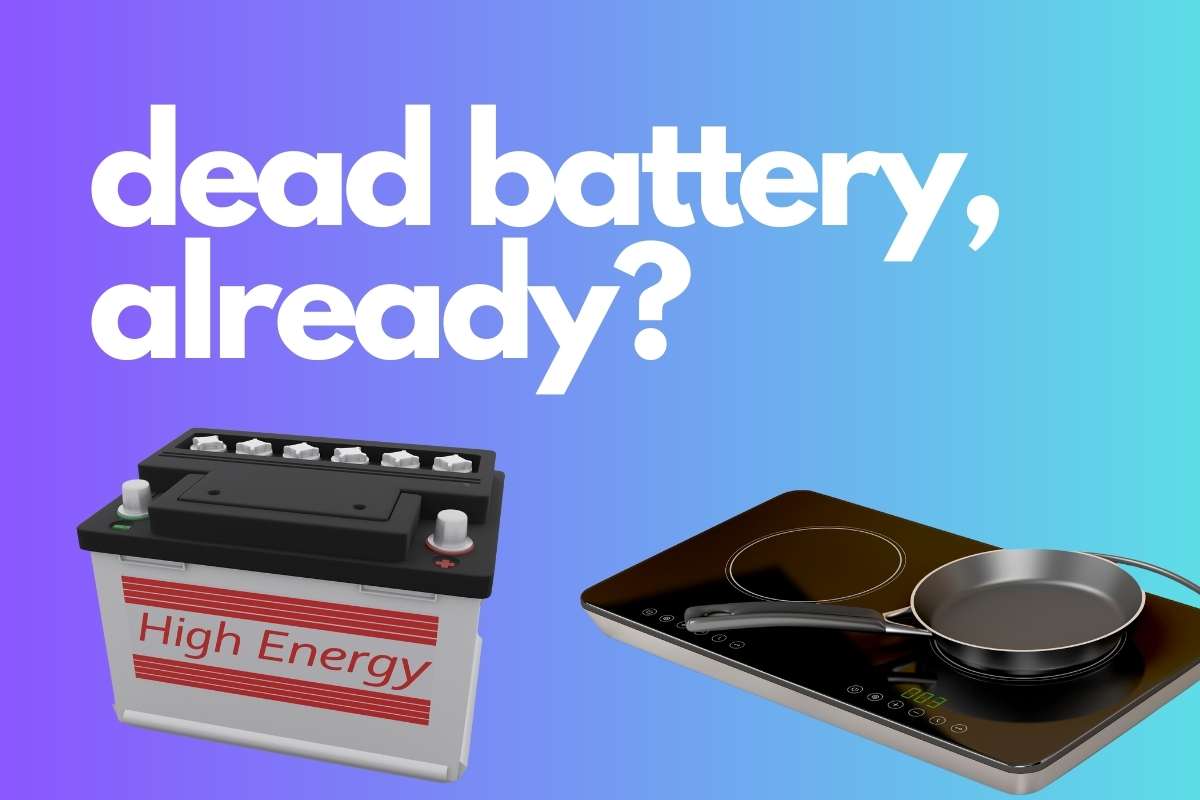How to Extend the Life of My RV Battery
- Ensure the battery is fully charged before use
- Utilize an inverter to convert DC to AC power
- Invest in a quality battery bank with more amp hours or lithium technology
Running an induction cooktop can take a toll on an RV battery, and it may not be able to provide the necessary amount of energy needed to keep it running. To ensure that your RV battery runs longer, there are several steps that you can take.
First, make sure that your battery is fully charged before using it to power the induction cooktop. If the battery is not fully charged, it will not have the capacity to provide the necessary power and will run down quickly. To keep your battery charged, you can use a solar panel, generator, or plug it into a power source.
Second, you can install an inverter in your RV. This will allow you to convert DC to AC power and use the induction cooktop with a regular power source. This will help to keep the battery running longer, as it will not be relying solely on the RV battery.
Finally, invest in a quality battery. A good battery will be able to provide the necessary power while also lasting longer than a lower quality battery.
Maximizing Off-Grid Induction Cooking with the Right Battery
Induction cooking, especially when off-grid, has become popular for many adventurers, van-lifers, and outdoor enthusiasts. However, the success of this cooking method heavily depends on a consistent power supply, making the battery’s quality a paramount concern.
Investing in a high-quality battery bank isn’t just about ensuring your stove heats up; it’s about securing uninterrupted cooking sessions and the confidence that you won’t be left midway through preparing a meal. Quality batteries are meticulously designed and built with advanced materials to store and discharge power more efficiently. This means while a lower-tier battery might quickly deplete with the high demands of induction cooking, a premium one can rise to the occasion, delivering the necessary power and doing so for extended periods.
Furthermore, the lifespan of such a battery typically surpasses that of its less reliable counterparts. Over time, inferior batteries can degrade faster, losing their capacity to hold a charge. This means more frequent replacements and the potential inconvenience of unreliable power when you least expect it. In contrast, a top-notch battery retains its capabilities for much longer, proving to be a sound investment in the long run.
Newer batteries may even have enhanced safety features, ensuring protection against hazards like overcharging, short circuits, or overheating. When you’re off the grid, the last thing you want is a safety concern from a subpar battery.
In summary, while the allure of off-grid induction cooking grows, the heart of its success lies in the power source. By investing in a quality battery, you’re securing uninterrupted, efficient cooking sessions and ensuring safety, longevity, and overall better value for your money. Prioritize quality, and your off-grid culinary adventures will undoubtedly be more seamless and enjoyable.
A battery Monitor to watch power usage and availability
When you’re off-grid cooking, staying informed about your battery bank’s status is crucial. Adding a battery monitor can be a game-changer. This tool provides real-time data on battery health, capacity, and consumption. While cooking, energy demand can fluctuate, and a monitor ensures you’re never caught off-guard by sudden power drops. You can make informed decisions by keeping a vigilant eye on energy usage, such as adjusting cooking times or managing other appliances. A battery monitor offers peace of mind, ensuring that your culinary endeavors are backed by consistent, reliable power, or at least knowing when you might run out of power before starting that next dish.
Induction cooktops are easy and can run from your batttery bank.
If yoiu have a saolr power charged battery bank with a large enough inverter, induction cooktops can be a great choice. Exploring the right induction cooktop can revolutionize your culinary experience. This selection of cooktops offers efficiency, precision, and safety. Dive into these options to find the perfect fit for your kitchen, ensuring delicious meals and streamlined cooking processes every time. Don’t miss out on the future of cooking!
